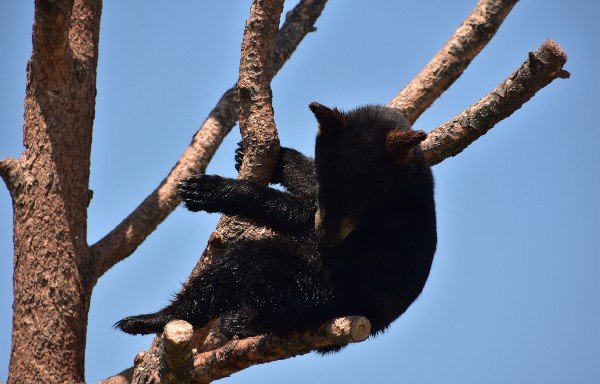When you visit a national park, seeing a bear is often the goal, and spotting one can be very exciting. Such an experience, while special, can also be unpredictable because bears can be dangerous. Bears rarely attack people but when they do, they can inflict serious injury or death. It is up to you to follow the safety guidelines set by national parks to ensure your safety.
The following stories recount two recent and separate encounters between human beings and bears, how they could have easily turned fatal, and what they teach us about bear safety.
Video 1: Woman Charged at by Grizzly Bear in Yellowstone
At around 4.45pm on May 10, 2021, a female grizzly bear charged at an unidentified woman in Yellowstone National Park, while protecting her cubs. The incident, which was caught on camera, showed the woman approaching the grizzly to take pictures. The bear then briefly ran toward the woman who had gone within 100 yards of the bear. US park rangers are investigating the matter.
While the woman in this incident was not seriously or fatally injured, she could have easily been. A bear with her cubs is one of the most ferocious animals in the wild and they will often charge to protect their young ones. By approaching the bear too close, the woman put her life in danger.
Video 2: Viral Footage of 17-Year-Old Girl Shoving a Bear
In another incident, a 17-year old girl shoved a bear that had wandered into her backyard on May 31. The event was caught on surveillance cameras and has since gone viral. In the video, the girl is seen running outside – reportedly responding to her dogs’ frantic barking – to find the dogs in a confrontation with a brown bear with her cubs. She then runs toward the bear and shoves it off the wall.
Again, there is no telling how this scene would have played out if the mother bear hadn’t fallen off that wall. Bears can run at the speed of a racehorse and nothing would have stopped it from attacking the girl, especially since it was protecting its cubs.
What Should You Do If You See a Bear?
These incidents serve to highlight how close encounters with bears can turn tragic and why bear safety is important. If you have an encounter with a bear, take heed of the following precautions:
- Help the bear identify you as a human by standing still, slowly waving your arms, and talking calmly. It may come close to you and stand. Stand your ground; it is only curious.
- Never scream, make a high-pitched squeal, imitate bear sounds, or make a sudden movement as you could trigger an attack.
- Never run away from a bear (it is faster and will pursue you) or climb a tree (black bears and grizzlies can climb trees).
- Never approach or put yourself between a mother bear and her cubs.
Conclusion
When visiting a national park, viewing etiquette is an excellent way to protect yourself from encounters that could escalate into bear attacks. The goal is to be bear-aware at all times, to keep your distance, and do not surprise bears. If a bear notices you, you should consider the tips mentioned in this article and the guidelines provided by the park administration. Remember, bears don’t want to attack you, but you shouldn’t provoke them, approach them too close, or try to fight them. If you want to see bears at a safe distance, visit Yellowstone Bear World.






